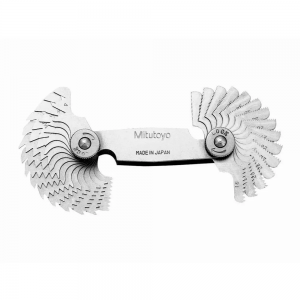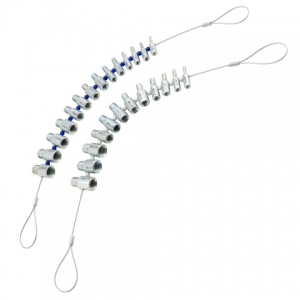Apologies for prolonging this, but I'm bored so I'll clarify.
The OP asked about thread checking gauges for identifying bolts. The cable-type thread gauge I linked to is a great tool for that.
By "fold out metal one", I think you were talking about a thread pitch gauge (to measure the number of threads per inch, or the pitch in mm for metric threads). One of these:

A pitch gauge is useful to verify that you've set your QCGB or change gears correctly when cutting threads on the lathe after a scratch pass. (It's much easier on external threads than with an internal thread, though!).
A pitch gauge only measures pitch, however, and does not tell you anything about the major and minor diameter of a thread. sometimes it isn't feasible to bring the mating part to a thread you've just cut in the lathe. A cable type set of thread gauges is very handy in that scenario if you don't have a bolt or nut (or go/no-go gauge) of the correct size at hand. It's particularly easy to screw up the diameter of an internal bore. A cheap set of thread gauges like I showed above usually suffices, but, of course, if you really care about class of fit you'll need go/no-go gauges (which are quite expensive or require a lot of time and effort to make in advance).
I've never had to remove a gauge from the cable. The cable can be a bit of a nuisance, but you can usually bend the cable away from the one gauge you're using sufficiently for it not to foul with the work.
In short: I'd highly recommend the $30 tool I linked to. I find my set quite useful and use it all the time. I also have pitch gauges, but I use them much less frequently.




